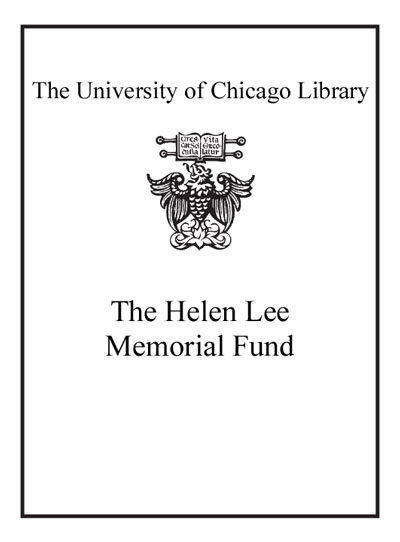Architectural restoration and heritage in imperial Rome /
Saved in:
| Author / Creator: | Siwicki, Christopher, author. |
|---|---|
| Edition: | First edition. |
| Imprint: | Oxford ; New York, NY : Oxford University Press, [2020] |
| Description: | xiii, 301 pages : illustrations (black and white) ; 25 cm. |
| Language: | English |
| Series: | Oxford studies in ancient culture and representation Oxford studies in ancient culture and representation. |
| Subject: | |
| Format: | Print Book |
| URL for this record: | http://pi.lib.uchicago.edu/1001/cat/bib/12310349 |
MARC
| LEADER | 00000cam a2200000Ii 4500 | ||
|---|---|---|---|
| 001 | 12310349 | ||
| 005 | 20200119144145.1 | ||
| 008 | 190513s2020 enka 000 0 eng d | ||
| 003 | ICU | ||
| 040 | |a YDX |b eng |e rda |c YDX |d UKMGB |d OCLCO |d ERASA |d OCLCF |d YDXIT |d YDX | ||
| 020 | |a 0198848579 |q hardcover | ||
| 020 | |a 9780198848578 |q hardcover | ||
| 035 | |a (OCoLC)1101040076 | ||
| 043 | |a e------ |a aw----- |a ff----- | ||
| 050 | 4 | |a NA109.R57 |b S59 2020 | |
| 082 | 0 | 4 | |a 720.288 |2 23 |
| 100 | 1 | |a Siwicki, Christopher, |e author. |0 http://id.loc.gov/authorities/names/no2020039574 |1 http://viaf.org/viaf/5158427727306060940 | |
| 245 | 1 | 0 | |a Architectural restoration and heritage in imperial Rome / |c Christopher Siwicki. |
| 250 | |a First edition. | ||
| 264 | 1 | |a Oxford ; |a New York, NY : |b Oxford University Press, |c [2020] | |
| 300 | |a xiii, 301 pages : |b illustrations (black and white) ; |c 25 cm. | ||
| 336 | |a text |2 rdacontent |0 http://id.loc.gov/vocabulary/contentTypes/txt | ||
| 336 | |a still image |2 rdacontent |0 http://id.loc.gov/vocabulary/contentTypes/sti | ||
| 337 | |a unmediated |2 rdamedia |0 http://id.loc.gov/vocabulary/mediaTypes/n | ||
| 338 | |a volume |2 rdacarrier |0 http://id.loc.gov/vocabulary/carriers/nc | ||
| 490 | 1 | |a Oxford studies in ancient culture and representation | |
| 520 | 8 | |a This volume addresses the treatment and perception of historic buildings in Imperial Rome, examining the ways in which public monuments were restored in order to develop an understanding of the Roman concept of built heritage. It considers examples from the first century BC to the second century AD, focusing primarily on the six decades between the Great Fire of AD 64 and the AD 120s, which constituted a period of dramatic urban transformation and architectural innovation in Rome. Through a detailed analysis of the ways in which the design, materiality, and appearance of buildings - including the temple of Jupiter Capitolinus and hut of Romulus - developed with successive restorations, the case is made for the existence of a consistent approach to the treatment of historic buildings in this period. This study also explores how changes to particular monuments and to the urban fabric as a whole were received by the people who experienced them first-hand, uncovering attitudes to built heritage in Roman society more widely. By examining descriptions of destruction and restoration in literature of the first and second centuries AD, including the works of Seneca the Younger, Pliny the Elder, Martial, Tacitus, and Plutarch, it forms a picture of the conflicting ways in which Rome's inhabitants responded to the redevelopment of their city. The results provide an alternative way of explaining key interventions in Rome's built environment and challenge the idea that heritage is a purely modern phenomenon. | |
| 650 | 0 | |a Historic buildings |x Conservation and restoration |z Rome. | |
| 650 | 0 | |a Historiography |z Rome. |0 http://id.loc.gov/authorities/subjects/sh2008105695 | |
| 651 | 0 | |a Rome |x Buildings, structures, etc. | |
| 650 | 7 | |a Buildings. |2 fast |0 (OCoLC)fst00840962 | |
| 650 | 7 | |a Historic buildings |x Conservation and restoration. |2 fast |0 (OCoLC)fst00957729 | |
| 650 | 7 | |a Historiography. |2 fast |0 (OCoLC)fst00958221 | |
| 651 | 7 | |a Rome (Empire) |2 fast |0 (OCoLC)fst01204885 | |
| 830 | 0 | |a Oxford studies in ancient culture and representation. |0 http://id.loc.gov/authorities/names/no2004004428 | |
| 903 | |a HeVa | ||
| 929 | |a cat | ||
| 999 | f | f | |i 11200934-dd2a-5feb-b47e-27e2ce76be68 |s e27711f8-df03-5663-85ee-65e4d70c5259 |
| 928 | |t Library of Congress classification |a NA109.R57 S59 2020 |l JRL |c JRL-Gen |i 11873977 | ||
| 927 | |t Library of Congress classification |a NA109.R57 S59 2020 |l JRL |c JRL-Gen |e LEEH |b 116979349 |i 10231954 | ||

